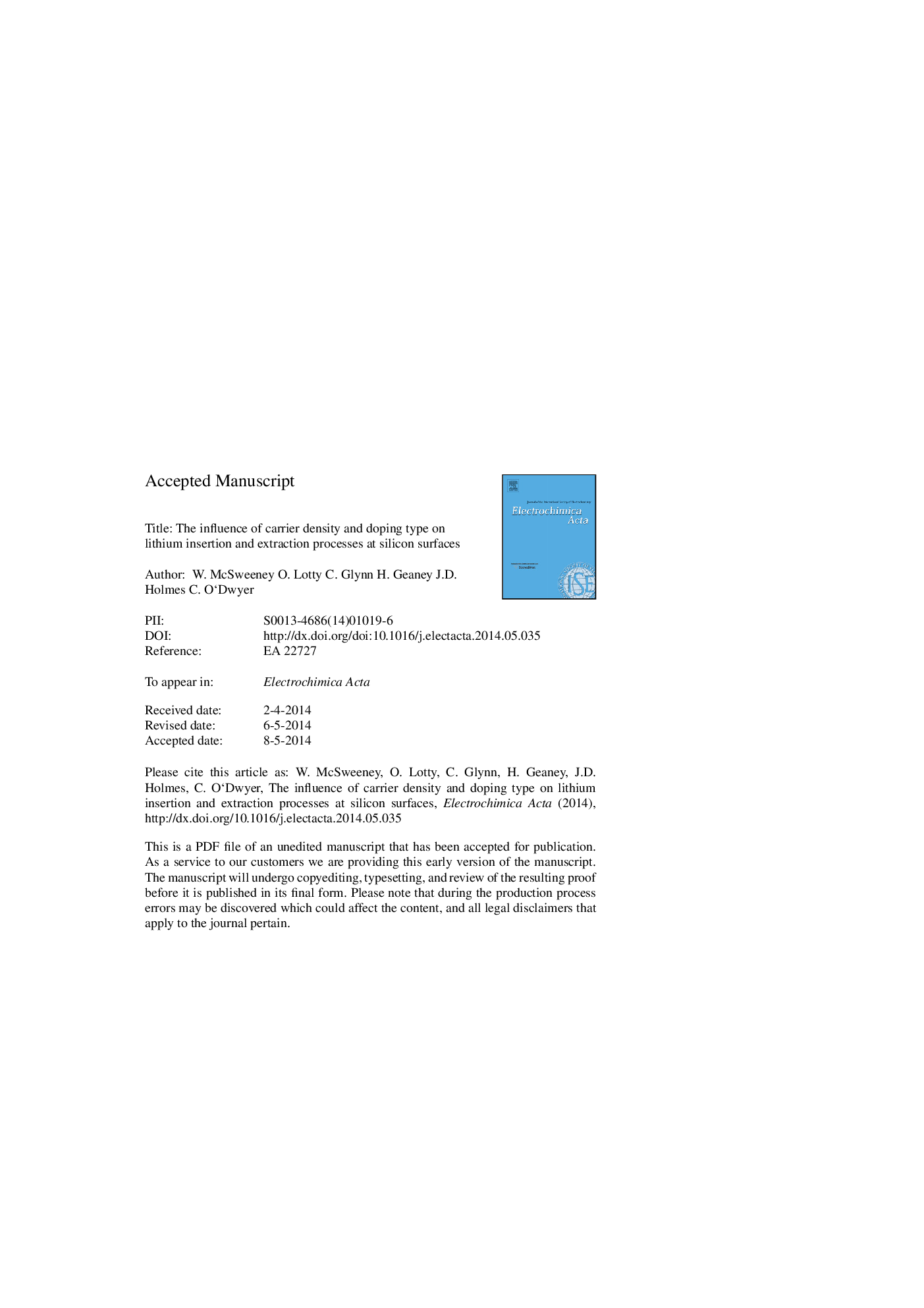| Article ID | Journal | Published Year | Pages | File Type |
|---|---|---|---|---|
| 6613569 | Electrochimica Acta | 2014 | 40 Pages |
Abstract
The Li+ insertion and extraction characteristics at n-type and p-type Si(100) electrodes with different carrier density and doping type are investigated by cyclic voltammetry and constant current measurements. The insertion and extraction potentials are demonstrated to vary with cycling and the occurrence of an activation effect is shown in n-type electrodes where the charge capacity and voltammetric currents are found to be much higher than p-type electrodes. A rate-dependent redox process influenced by the surface region electronic density, which influences the magnitude of cyclic voltammetry current is found at Si(100) surface regions during Li insertion and extraction. At p-type Si(100) surface regions, a thin, uniform film forms at lower currents, while also showing a consistently high (>70%) Coulombic efficiency for Li extraction. The p-type Si(100) surface region does not undergo crack formation after deintercalation and the amorphization was demonstrated using transmission electron microscopy (TEM). X-ray photoelectron spectroscopy (XPS) and Raman scattering demonstrate that highly doped n-type Si(100) retains Li as a silicide and converts to an amorphous phase as a two-step phase conversion process. The findings show the succinct dependence of Li insertion and extraction processes for uniformly doped Si(100) single crystals and how the doping type and its effect on the semiconductor-solution interface dominate Li insertion and extraction, composition, crystallinity changes and charge capacity.
Related Topics
Physical Sciences and Engineering
Chemical Engineering
Chemical Engineering (General)
Authors
W. McSweeney, O. Lotty, C. Glynn, H. Geaney, J.D. Holmes, C. O'Dwyer,
